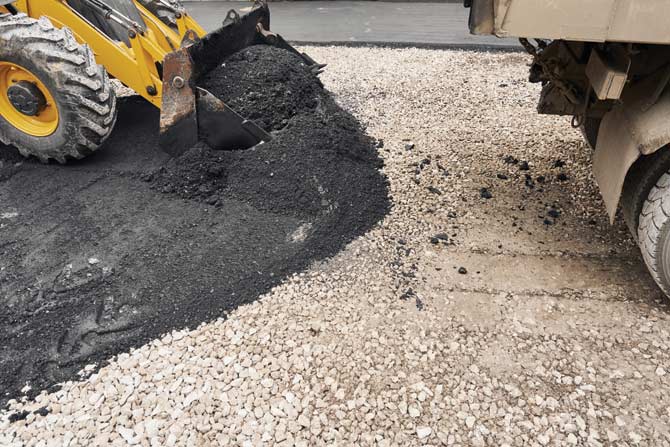
The publicly funded highway market makes up about 60% of the market share in Utah. (The rest of the industry’s markets are the airfield, residential and commercial markets.) Federal-aid highway funding makes up almost half of Utah’s annual state DOT capital outlays for highways and bridge projects. As a result, Congress does not enact any bills more important to the asphalt pavement industry than multiyear surface transportation reauthorization bills.
The bipartisan Infrastructure Investment and Jobs Act (IIJA) bill, signed into law Nov. 15, 2021, by President Joe Biden, authorizes exactly that. IIJA will deliver badly needed funding to repair and rebuild Utah’s roads and bridges over the next five years. It will also unleash a demand for asphalt pavement not seen since the start of the Federal-aid Highway System in the 1950s.
Utah Sen. Mitt Romney (R-UT) negotiated the bill with his colleagues and was the sole member of the Utah congressional delegation to support the legislation. After President Biden signed the bill into law, Senator Romney wrote a press release that said IIJA “will help Utah expand and build roads, mitigate drought conditions, fulfill critical water needs, and prepare for and respond to wildfires without raising taxes or increasing inflation.”
As the senator’s press release indicated, IIJA is more than a surface transportation reauthorization bill. It is also an infrastructure bill dealing with roads, bridges, airports, water, and broadband. Nevertheless, the legislation will provide the largest federal highway formula funds investment for Utah. They will total $2.6 billion over five years. That is about 33% more than the state’s federal-aid highway formula funds under the previous law, the FAST Act.
The National Asphalt Pavement Association led the industry’s advocacy campaign, and a white paper called Build Back Better with Asphalt provided talking points during meetings with members of Congress and congressional staff. Together, NAPA’s government affairs team, state asphalt pavement associations, and industry members educated decision-makers, who learned asphalt pavement is a sustainable, economical and high-performing material critical to the economy and U.S. jobs. In fact, NAPA’s lobbying efforts were detailed in a feature story in The New York Times, summing up NAPA’s lobbying for infrastructure dollars as the most successful of any interest group.
From an asphalt industry perspective, IIJA is important for what it does and doesn’t include. First, the legislation provides five years of both funding and policy certainty. On the funding side, UDOT will be able to plan and budget for highway projects over five years. They know what their funding allocation will be from the federal government on an annual basis. On the policy side, there is no question that reducing carbon emissions from construction materials, including asphalt pavements, will be important for the asphalt pavement industry to realize all the opportunities afforded by the legislation.
IIJA also includes $6 million annually to deploy innovative pavement technologies that are ready to go in the marketplace but are not fully implemented yet. There is also another program where UDOT would be able to get a 100% payable share for a highway project if they set up a contingency fund to address work zone safety issues not identified at bid time.
Pavement-type selection or pavement design mandates, such as requirements for life-cycle cost analysis, alternate bids, and plastic in asphalt, are not included in the legislation. Also, NAPA successfully secured an exemption for liquid asphalt, polymers, and additives from IIJA’s Buy America requirements. Without the exemption, 12% of the nation’s supplied liquid asphalt, mostly coming from Canada, would have been barred from the marketplace, severely impacting the asphalt supply chain in the U.S.
With the passage of IIJA and the companion bill, the Consolidated Appropriations Act, 2022, we now have a clear picture of Utah’s paving market for this year. In 2021, the previous surface transportation bill, the FAST Act, provided Utah with $380 million for its highway and bridge program. For 2022, IIJA will provide Utah with $460 million, another $45 million for a new bridge formula program, and $5.4 million to build a network of EV charging stations. The Consolidated Appropriations Act includes $10 million for three highway earmarks and another $1.2 billion in bridge formula grants yet to be distributed to the states.
In addition, Utah’s state and local governments can apply for new competitive grant programs to fund road and bridge projects throughout the state. Currently, there are over $6 billion in grants available to apply for, and the U.S. Department of Transportation will be looking to fund projects that use low-embodied carbon construction materials, recycling or both.
The increase in funding toward Utah’s paving and bridge market will increase from $380.1 million last year to a whopping $520.4 million this year, a 36% increase! And this does not include the possibility of grant awards later this year.
The key to realizing the benefits of this increase will be the readiness of UDOT and local governments to budget for the required match, plan and design highway projects, and get them ready for bid.
In December, partnering with the federal government got off to a rough start when Secretary Pete Buttigieg issued a policy memorandum discouraging states from applying federal-aid highway dollars for new capacity highway projects. Sen. Romney has asked Secretary Buttigieg to rescind the memorandum as it did not adhere to congressional intent or the law.
However, the trend is for states like Utah to spend more and more of their federal highway dollars to repair existing roads and bridges. According to Federal Highway Administration data, in 1993, the percentage of spending by all levels of government on roadway projects was split 50-50 between added capacity and repair projects. Thirty years later, 81% of spending is on reconstruction, restoration, rehabilitation, and repaving markets. The trend toward fixing what we have will only intensify and grow, which will spur asphalt demand even further.
IIJA, combined with the Consolidated Appropriations Act, 2022, will provide a significant shot in the arm for the asphalt pavement industry in Utah. Implementation will take a little longer and require a partnership between the federal government, state and local government, and the industry. IIJA will support many years of demand for asphalt in the pavement market at the end of the day. Combined with a strong residential market in Utah, the asphalt pavement industry needs to prepare now for the increase in demand for asphalt pavement mix that will probably arise from these two pieces of legislation.
Jay Hansen leads NAPA’s government affairs team on federal legislation and issues important to the asphalt pavement industry. His primary focus is educating members of Congress and their staff on asphalt’s role in America’s economy and keeping the industry informed on issues pending in Washington, D.C.







